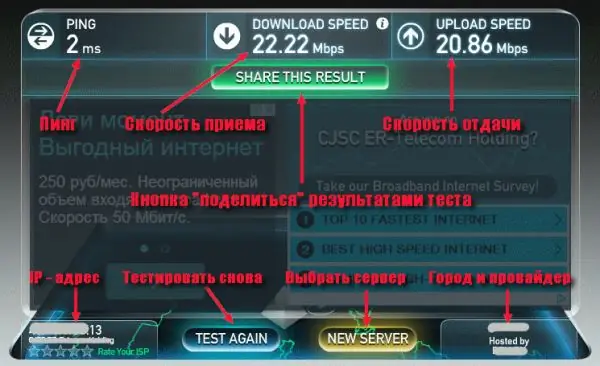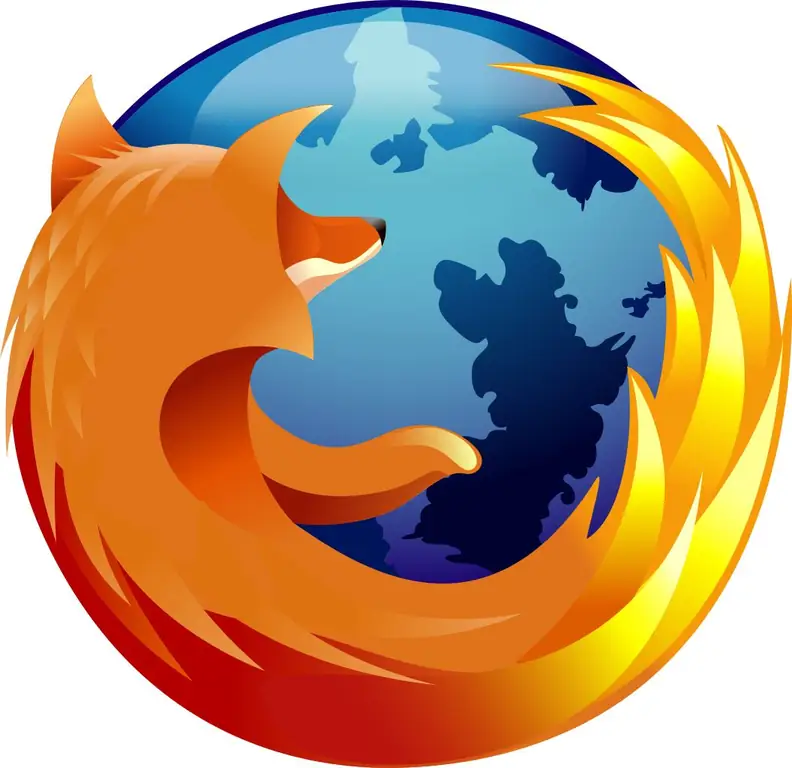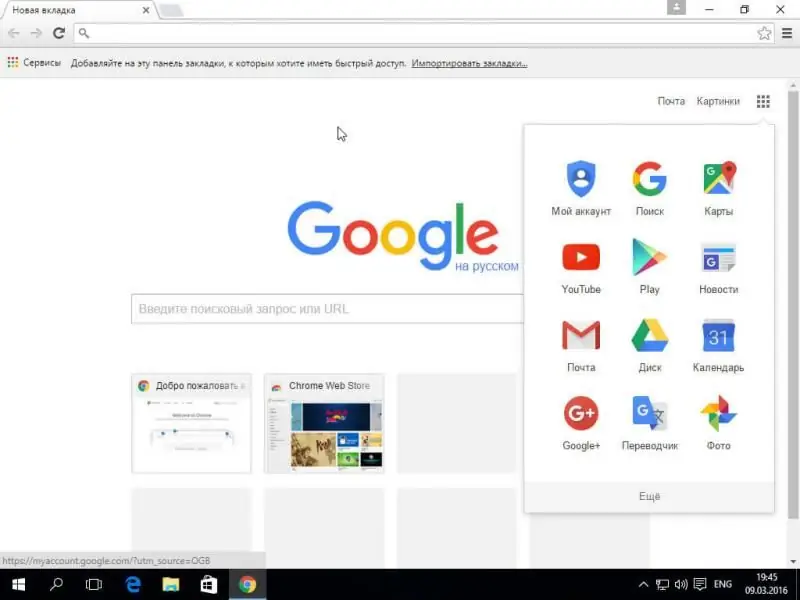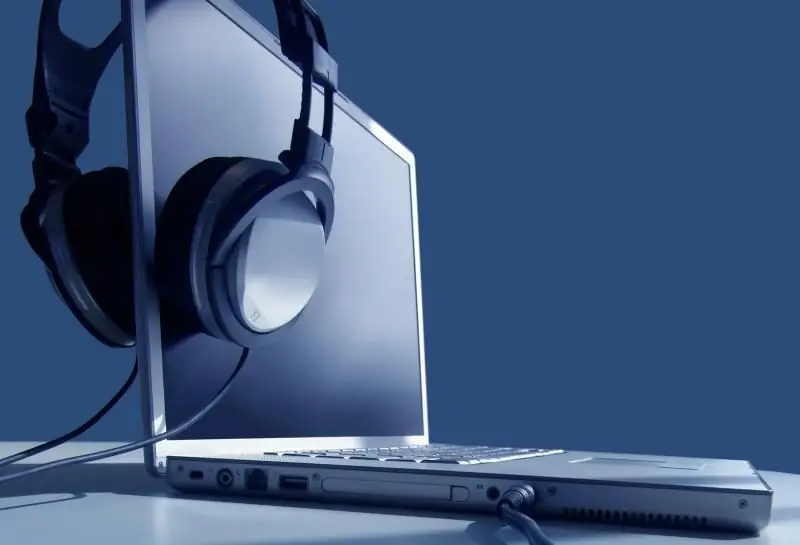
Table of contents:
- Author Bailey Albertson [email protected].
- Public 2024-01-19 10:46.
- Last modified 2025-06-01 07:32.
Video playback slows down in the browser: why this happens and how to fix it

Watching videos online, that is, directly in the browser, is a must for the modern Internet user. Let's look at the causes of video playback problems and how to fix them.
Content
-
1 Why the video in the browser does not play correctly
-
1.1 CPU and RAM are overloaded
- 1.1.1 Closing unnecessary applications in Windows Task Manager
- 1.1.2 Clearing the Windows Startup List
- 1.1.3 Video: How to get rid of startup applications in Windows 7
-
1.2 Not a high-speed network connection
- 1.2.1 Checking connection speed online
- 1.2.2 Video: How to Check Internet Connection Speed with Speedtest
-
1.3 Full browser cache
1.3.1 Video: How to Clear Cache in Different Browsers
-
1.4 Browser crashes
1.4.1 Video: How to Update Google Chrome
-
1.5 Problems from Adobe Flash Player
- 1.5.1 Checking the Adobe Flash Player Plugin Version
- 1.5.2 Disable Flash Player Hardware Acceleration
- 1.6 PC hardware problems
- 1.7 Other Causes of Online Video Disruptions
-
Why video in the browser does not play correctly
The real reasons for intermittent video playback in browsers lie in both the hardware and software parts of a PC or tablet.
CPU and RAM overloaded
Any browser (Google Chrome, Microsoft Edge, Mozilla Firefox, etc.), when opening 10 tabs with social networking sites, consumes a gigabyte or more of RAM, and also loads the clock speed of each of the processor cores with which it is capable of working.
Closing unnecessary applications in Windows Task Manager
It's not just browsers that affect CPU and RAM utilization. The user or Windows itself launches other programs, pushing previously running processes to the background.
If there are no unnecessary open windows on the Windows desktop, there are no icons in the taskbar / indication, and the video in the browser still slows down, use the Windows Task Manager. It will show all hidden processes.
To check the RAM and CPU utilization, do the following:
-
Start Task Manager with the keyboard shortcut Ctrl + Shift + Esc (or Ctrl + alt=+ Del). In Windows 10, you can also right-click on Start and select Task Manager.

The item "Task Manager" in the context menu of the "Start" button in Windows 8/10 Select "Task Manager" from the menu after right-clicking on "Start"
-
Go to the Performance tab. A processor load of 90% or more leads to "brakes" when performing even the simplest actions.

Virtual monitor of PC resources during operation Task Manager visually displays the workload of CPU, memory and disk
-
Go to the Applications tab (in Windows 8/10, programs and their processes are combined into one table), select any of the most resource-intensive applications and click on the End task button.

Stopping a program in the Windows 7 Task Manager Close the program window by canceling the task or stop all its processes
- You can also use the End Process (or End Process Tree) command to stop interfering programs completely.
Clearing the Startup List in Windows
If all stopped programs restarted the next time you start Windows, and the video in browsers continues to "twitch", remove unnecessary programs from "Startup". To do this, follow these steps:
-
Return to the "Task Manager" and go to the "Startup" tab.

List of auto-starting applications in Windows 7 Use shutdown buttons for auto-loading apps
- Uncheck the unnecessary applications from the list and click the Apply (or OK) button.
-
Restart Windows and make sure all of these programs no longer start. If any of the programs still started, find in its settings the option to start at Windows startup and disable it. The vast majority of programs will not start along with the OS after such a forced shutdown.

Disabling autostart of individual programs using Skype as an example Do not use the option to automatically start the program with the OS
To disable, for example, the autostart of the "Mail. Ru Agent" program, do the following:
-
Give the command "Menu" - "Program settings" and go to the "General" tab.

Switching to general application settings using the example of "Mail. Ru Agent" Most often, in the general settings of the application there is an option for its autostart
-
Disable the "Run the program when you turn on the PC" function.

Disabling autorun using the example of "Mail. Ru Agent" Uncheck the program autostart box
Likewise, autostart of any application is disabled: instant messengers, social network clients, Windows utilities, etc.
At startup, Windows also checks the startup folders for applications. If some programs continue to start on their own, try removing their shortcuts from the following autorun folders:
- in the folder of a specific user: C: / Users / Username / AppData / Roaming / Microsoft / Windows / StartMenu / Programs / Startup /.lnk;
- in the default directory for all Windows users: C: / Users / All Users / AppData / Roaming / Microsoft / Windows / StartMenu / Programs / Startup /.lnk.
It also helps by checking the application startup entries in the Windows registry. To do this, do the following.
-
Give the command "Start" - "Run" and start the "Registry" editor with the regedit command.

Launching Windows 10 "Registry Editor" from the Run Console Enter the phrase regedit in the Run window
-
Open the registry key: HKEY_CURRENT_USER / SOFTWARE / Microsoft / Windows / CurrentVersion / Run.

Run folder in Registry Editor The user is interested in the Run subfolder in the "Registry Editor"
- Remove the registry keys responsible for the startup of specific programs.
Ideally, the Run subfolder should be empty. Windows components responsible for starting vital OS functions will start on their own using different directories and registry values.
Video: how to get rid of startup applications in Windows 7
Not a high-speed network connection
Video playback may slow down due to low Internet speed. Connection speed is determined by two factors:
- technology and standard of a wired / wireless network (if high-speed traffic is limited at a "package" tariff);
- value of the maximum speed at an unlimited tariff.
If the former often varies widely, then the user cannot change the latter.
For cellular networks, the actual speed fluctuates depending on the load of a particular base station. The average speed in 3G networks is 1-4 Mbps, in 4G networks it reaches 10-15.
In cable and fiber-optic networks, the Internet speed most often fluctuates within tens of megabits. Overloads are extremely rare. With this value, the video is played without any delay.
Check your connection speed online
To make sure that the problem lies in the quality of the Internet connection, you need to conduct an online speed test. To do this, you can use the site speedtest.net.

Click the start testing button
Click on the triangle and select a server from the list. Click on the "Start Checkout" button. First, the recoil is measured (outgoing channel - from subscriber to network), then download (incoming channel - from network to subscriber). The values will be displayed in megabits.

The speed cannot be higher than the one that the provider limited you
Having received the result, check it with the speed that the provider promised. If the numbers don't agree, call your operator. You can also try to wait until the video is fully loaded before starting it.
With cellular operators, after the high-speed traffic on the tariff is exhausted, the subscriber's speed drops to 64 Kbps, so it makes no sense to measure the speed here. With this indicator, the video will not be able to be played in any quality.
Video: how to check your internet connection speed with Speedtest
Full browser cache
Browser cache - an area of temporary files on the PC disk - "ambulance" with a slow connection. When you open regularly visited sites, graphics, sound, Java scripts and CSS files are not loaded from the server, but taken from the cache.
When the cache size is too large (tens of gigabytes or more), the opposite effect occurs: the video starts to slow down when there is too much data exchange between the RAM and the paging file on disk C. Caching (and reading from memory) of the downloaded video does not provide the stream rate that needed for its clear and smooth reproduction.
Temporary browser files are stored in the corresponding subfolders of the Windows user and the browser itself. To clear, for example, the Yandex Browser cache, do the following:
-
Give the command "Menu" - "History" and go to manage recent actions in Yandex Browser.

Item "History" in the settings of "Yandex Browser" Click on the corresponding item in the Yandex Browser menu
-
Click the "Clear History" button. A selection of categories of data to be deleted will open.

The Clear History button in the Yandex Browser settings window Click the clear history button to select the type of data to be deleted
-
Check the necessary categories, including the cache, and click the "Clear history" button.

Deleting the cache and other personal data of Yandex Browser All selected browser folders will be cleared
Video: how to clear cache in different browsers
Browser crashes
Browser crashes can result from:
- actions of viruses and other malicious codes;
- careless actions of an inexperienced user (for example, deleting browser service files);
- frequent installation of new programs that affect the operation of multimedia engines (Net. Framework, Adobe Flash Player, etc.), with which the work of browsers is closely related;
- hardware failures of the PC directly during its operation;
- mistakes made by developers when releasing the next browser update.
Most browser crashes are "cured" by updating its version. For example, the popular Chromium engine, to which Yandex. Browser, Google Chrome, Orbitum, TorBrowser and other well-known brands owe their work, has a convenient built-in update tool.
To update, for example, the Google Chrome browser, do the following:
-
Give the command "Menu" - "About the browser" (or "Menu" - "Help", depending on the version of Google Chrome).

Opening the Google Chrome Help Panel Go to the Help submenu to check the update for Google Chrome
-
Google Chrome will check for a new version. If an update is released, Chrome will download and install it automatically.

Google Chrome has been successfully updated Chrome browser will inform about its latest version and, if necessary, install it
Restart your browser.
Video: how to update Google Chrome
Problems from Adobe Flash Player
In Google Chrome and Yandex. Browser, the Adobe Flash Player plug-in is supplied with the browser.
There is no need to download the Adobe Flash plug-in separately. It can be updated directly in the browser, it appears in the list of installed plugins.
If the browser itself has not been updated for a long time, you can update it too. If video playback problems persist, a different version will be installed.
Checking Adobe Flash Player Plugin Version
If the video being played continues to stutter despite the previous measures, check which version of the Adobe Flash Player plug-in is currently installed. To do this, do the following:
-
Enter the web address “chrome: // plugins” in the Chrome address bar (for “Yandex Browser”, substitute “browser” for “chrome”).

Displaying Adobe Flash Plugin Information in Google Chrome You can control how other Chrome plugins work as well
-
You must have one version of Adobe Flash Player. If there are two or more versions of the plugin, disable them one by one and restart the browser, returning when you open it to the page where the video was freezing.

Two versions of Adobe Flash Player in Chromium browsers Only one version of Flash Player should work
Disable Flash Player hardware acceleration
Adobe Flash hardware acceleration is disabled when the PC or tablet has driver issues for an older video card model. Otherwise, not only video, but also any moving content can "slow down" and / or distort colors during playback.
Google Chrome is taken as an example. To turn off hardware acceleration for Adobe Flash, follow these steps:
-
On the image or animation, with the display of which you are experiencing problems, give the command: right-click - "Options".

Checking Adobe Flash for test animation in Google Chrome Enter the playing video options of the Chrome browser
-
Uncheck "Enable hardware acceleration" and click "Close", the setting will be saved.

Turn off hardware acceleration for Google Chrome Disable hardware graphics acceleration option in Chrome
Restart your browser and refresh the webpage with the problematic video.
PC hardware problems
Older and / or cheaper notebook models that do not support the Full / UltraHD formats experience an overload of both the processor and RAM, and the video card, which is not able to handle such a stream (too little video memory).
To solve the problem, you need to choose an alternative PC, laptop or tablet that can clearly (without jerking) play video with a resolution of 1080 lines or more.
The drivers for the chipset and video card of your device model must be up to date. If the manufacturer no longer supports the PC, it is better to upgrade or replace it altogether.
The most famous driver manufacturers are NVidia, ATI (AMD) and Intel. Their software is universal. Some laptop manufacturers, such as Samsung, release proprietary drivers and utilities only for their devices.
Other causes of online video failures
The problem with playing videos online may lie in the following:
-
antivirus blocks playback of "viral" videos. If it starts at system startup, then disable it using the instructions above for deactivating auto-starting applications. The autorun of some antiviruses, for example, NOD32, can be blocked only by completely removing the program. You can reduce the load on the processor, memory and disk by suspending the antivirus. For example, if you have Kaspersky Free, right-click on its icon in the tray and select "Pause protection". Other programs have a similar function, for example, Avast and NOD32. It limits application activity until the next Windows restart;

Pausing antivirus protection in Kaspersky Free Kaspersky Free disables scanning processes after the pause command
-
unnecessary browser plugins, for example, extensions for proxying / tunneling Internet connections, slow down a large data stream typical for online video due to a total overload of their servers. Proxy servers and encryption ("tunnels") are ways to bypass the blocking of prohibited sites. For example, in Firefox, you can get to the list of installed plugins by typing "about: addons" in the address bar. With the help of the functions "Enable on demand", "Always enable" and "Never enable", the launch of the main add-ons is ordered and the launch of the minor ones is disabled;

Firefox plugin management Firefox has a feature that allows you to streamline the launch of major add-ons and disable the launch of minor
-
filling the browser cache. It can be paused using private browsing mode. It temporarily disables previously stored user data (cache, passwords, cookies, etc.). At the same time, the PC disk is free, no time is wasted searching for content in the device itself. The requested data is re-downloaded from the called site. So, if you often watch videos on YouTube or Odnoklassniki, log out of your account on the site itself and turn on incognito mode. In Chromium-modifications, Firefox and Opera, hidden web surfing is called most often by the "Menu" - "Open private window" command. Depending on the browser version, the menu item may be called "Enter incognito mode", "New private window", etc.

Entering incognito mode in the Opera browser Hidden (private) mode discards the user's web surfing history
Whatever the reason for the freezing and lagging of video in browsers, you can solve this problem. Both browsers, plugins for them, and video hosting sites are regularly updated.
Recommended:
What To Do If The IPhone Or IPad Is Dead And Won't Turn On Anymore: Solutions To The Video Problem

How to restore the power scheme of an iPad or iPhone if it won't turn on when charging. Step by step instructions for repair. How to avoid future charging problems
What To Do If The Mozila Firefox Browser Slows Down - Reasons And Solutions

Why can Mozilla Firefox slow down? How to return its previous high performance: we use all methods
Why And What To Do If The Google Chrome Browser Does Not Open The Pages - List The Main Reasons And Describe Solutions To The Problem

For some reason, Google Chrome does not open pages. Solution by clearing the cache, editing the hosts file, cleaning the registry, reinstalling the browser, etc
Why Yandex Browser Slows Down And What To Do About It - We Are Looking For Ways To Fix The Gap That Has Arisen

Because of what Yandex Browser is slow. How to check Internet speed, browser and computer load, remove viruses, reinstall the browser
What To Do If There Is No Sound In The Browser - Reasons And Solutions To The Problem, Step-by-step Instructions With Photos And Videos

Why the sound can suddenly disappear in the browsers. What measures should be taken to rectify the situation: we consider actions on the example of different browsers
